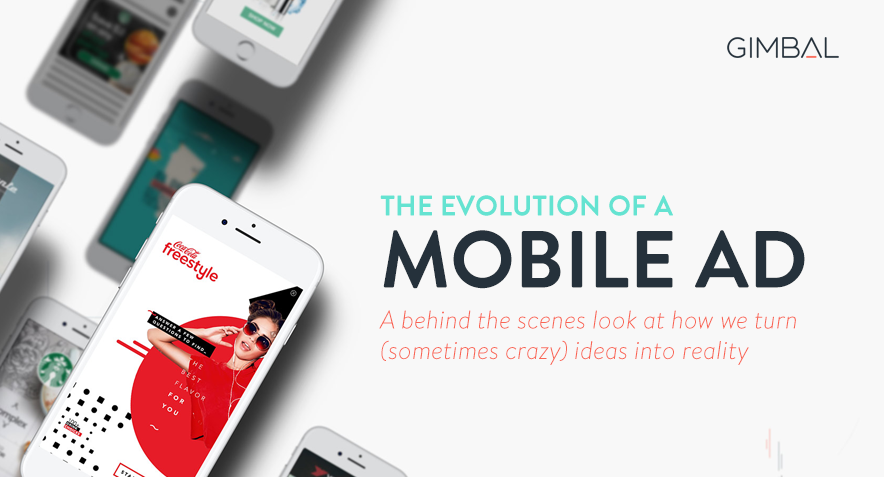A mobile ad is more than just a creative combination of copy and imagery.
It’s a piece of technology.
And like a piece of technology, it must be built from the ground up by engineers and designers working in concert.
So how is a mobile ad brought to life?
Phase I: Inspiration
It all starts with the device – a smartphone – and what it’s capable of.
When you look at a billboard or a printed advertisement, you quickly realize that the most you can do is look at it.
It’s true that sometimes billboard ads literally extend outside of the box, or that printed ads can be unfolded to reveal an enclosed scent.
But for the most part, offline advertising media is entirely static.
Desktop advertising isn’t that much better. Sure, it can do cooler things like tracking the user’s cursor – but how often are people really engaged with an ad to the point that they follow their gaze with the mouse?
The modern smartphone, however, offers more. Much more. Let’s take a look:

All of that, plus it fits in our pocket and goes everywhere with us. Let’s look at those capabilities in detail:
- Full HD screen that can show images, movies, and can split the screen for VR applications
- Touch-sensitive surface above the screen that can track up to ten fingers simultaneously
- Both a loudspeaker and a quiet earpiece, depending on a measurable distance to one’s ear
- Cameras that face in either direction plus a microphone
- Wireless connectivity such as Bluetooth, LTE, wifi, NFC, and even IR on select devices
- Accurate location from beacons, GPS, wifi, and cell-tower triangulation
- Sensors for orientation, motion, acceleration, direction of gravity, light, proximity, and so on
- “Gadgets” such as flashlight, multi-color LEDs, and vibration motors
- Always on and always connected to the internet
- With the owner at all times and in all situations
Phase II: Recombination
On its own, each individual feature may not seem like much. But assembled together, we can create experiences that captivate. This is where it gets fun.
For example, if we take multiple images, string them together into a movie and add sound, we’d get our best-selling ad unit known as an Inline Video.
Now, combine that with a shopping cart and place it below the video, and you get an Interactive Video ad unit that behaves just like a live catalog would. With this new type of ad, you could show any product while allowing the user to pick out his/her favorite items.
Or, you could modify the ad to let the user be in charge of their own experience by offering multiple images and letting them swipe or scroll through each. Welcome to the Slider and Parallax ad units.
Sometimes, of course, it is our customers who have the most outlandish requests that push us to discover new combinations.
Get Your Smartphone Ready
For a true hands-on demonstration of what I mean, you’ll need to pull out your phone and open the below the links (as these are mobile ads, they won’t work on desktop).
- We once created an ad where the user tilts the phone to move a boat to catch Santa hats for arbitrary points.
- In another instance, we gave the users a window into an alternate reality where they can check out a car in full 360º view from both inside and outside of the vehicle.
The bottom line is that from a mathematical standpoint, the possibilities are endless.
Phase III: Construction
Once the idea is clear, and the components and features are thoroughly tested, what remains is to bring it all together. That means handing it over to our talented design team who in turn provide us with stunning high definition sprites, photos, and videos.
Those final touches, and the willingness to go the extra mile at making them pixel-perfect is what sets us apart from the competition.
The results really speak for themselves.
To Be Continued…
This post was the first in our series entitled The Evolution of a Mobile Ad where we take a peek into Gimbal’s Ad Engineering Research and Development department.
In future blog posts, we’ll be exploring individual ad units in order to understand the creative and engineering processes that led to their creation. Please leave us a comment below with your suggestions or questions and we’ll be happy to address them in a response or in upcoming blog posts.

